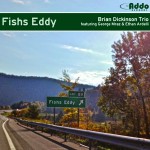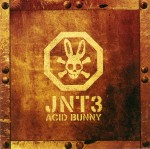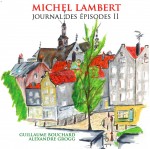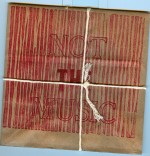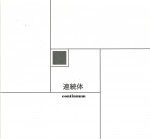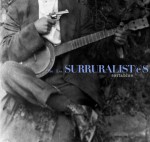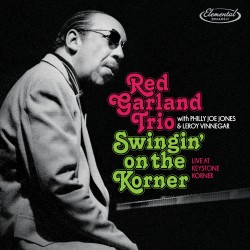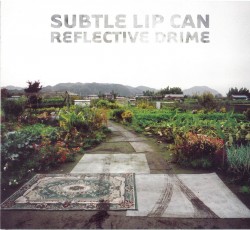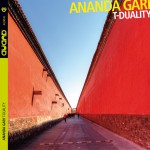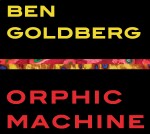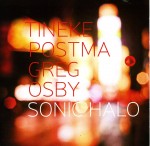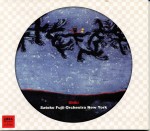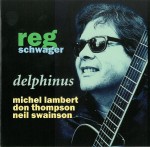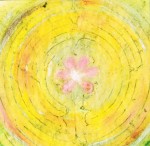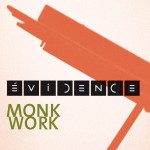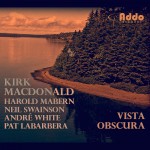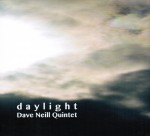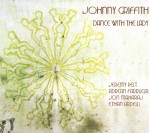When it comes to welcoming immigrants to North America, Canada and the United States have long had different policies. To Americans the ideal is the melting pot with all foreigners persuaded to become true-blue Yanks. Modern Canada, once it shook off fealty to Britain, has long promoted multiculturalism, where immigrants become Canadians without giving up their homeland identity. Generalities should be avoided, but it’s informative to see these concepts played out in improvised music. Thus Neelamjit Dhillon, born in Vancouver of Sikh background, has created a notable CD based on the infamous 1914 incident when 376 mostly Sikh immigrants were refused entry to Canada. To do so he mixes traditional Indian instruments with Western ones. In contrast, American performers who are his contemporaries, and with similar immigrant roots, have recorded sessions exclusively linked to the un-hyphenated jazz continuum.
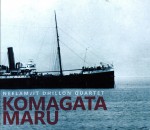 A notable work, that evolves through nine related sequences, Komagata Maru (neelamjit.com) manages to tell this shameful story of anticipation, betrayal, violence and ultimately hope for the future with only four musicians, admixing Indian sub-continental and Western sounds. Besides Dhillon, who plays alto saxophone, tabla and bansuri, a transverse bamboo flute, the others are bassist André Lachance and drummer Dan Gaucher plus Chris Gestrin, who plays sympathetic, whimsical piano throughout; and who produced, recorded and mixed the disc. With Gestrin’s strong accompaniment, Dhillion’s proficiency allows him to create swinging, unforced jazz lines throughout, no matter which instrument he’s playing. Even the tabla’s distinct timbres are used to make specific points rather than for exoticism. On Shore Committee: Bonds of Ancestral Kinship and later on British Clash at Budge Budge, for instance, the Carnatic drum’s textures contrast sharply with Gaucher’s martial-styled drumming, together symbolically depicting a full-scale riot on the first tune; and add to the sonic bellicosity of the second, further intensified by keyboard clips and harsh reed slurps. In the same way the expansive Munshi Singh: Trial for a Sanguine Tomorrow has its relaxed mood, set up by Lachance’s double-time strumming, disrupted by contrapuntal screeds, although they come from the bansuri rather than an alto saxophone. Crucially as well, the sonic representation of police-passenger combat on Debris from the Sky: Confront with the Tools at Hand, relies on the divergence between very Westernized double bass strokes and the distinctively Indian tabla patterns. Finally, the unforced Lee Konitz-like saxophone riffs Dhillon uses to underline the exposition here not only relate back to the introduction but portend the concluding Reconciliation: Evoke the Fallen and Persevere. Part elegy and part anticipation, the tune’s mellow hopefulness suggests why incidents like that of the Komagata Maru are rare in Canadian history. As well this meticulously crafted CD posits that Dhillon and company will soon be creating more intriguing sounds, either straight ahead or with a sub-continental lilt.
A notable work, that evolves through nine related sequences, Komagata Maru (neelamjit.com) manages to tell this shameful story of anticipation, betrayal, violence and ultimately hope for the future with only four musicians, admixing Indian sub-continental and Western sounds. Besides Dhillon, who plays alto saxophone, tabla and bansuri, a transverse bamboo flute, the others are bassist André Lachance and drummer Dan Gaucher plus Chris Gestrin, who plays sympathetic, whimsical piano throughout; and who produced, recorded and mixed the disc. With Gestrin’s strong accompaniment, Dhillion’s proficiency allows him to create swinging, unforced jazz lines throughout, no matter which instrument he’s playing. Even the tabla’s distinct timbres are used to make specific points rather than for exoticism. On Shore Committee: Bonds of Ancestral Kinship and later on British Clash at Budge Budge, for instance, the Carnatic drum’s textures contrast sharply with Gaucher’s martial-styled drumming, together symbolically depicting a full-scale riot on the first tune; and add to the sonic bellicosity of the second, further intensified by keyboard clips and harsh reed slurps. In the same way the expansive Munshi Singh: Trial for a Sanguine Tomorrow has its relaxed mood, set up by Lachance’s double-time strumming, disrupted by contrapuntal screeds, although they come from the bansuri rather than an alto saxophone. Crucially as well, the sonic representation of police-passenger combat on Debris from the Sky: Confront with the Tools at Hand, relies on the divergence between very Westernized double bass strokes and the distinctively Indian tabla patterns. Finally, the unforced Lee Konitz-like saxophone riffs Dhillon uses to underline the exposition here not only relate back to the introduction but portend the concluding Reconciliation: Evoke the Fallen and Persevere. Part elegy and part anticipation, the tune’s mellow hopefulness suggests why incidents like that of the Komagata Maru are rare in Canadian history. As well this meticulously crafted CD posits that Dhillon and company will soon be creating more intriguing sounds, either straight ahead or with a sub-continental lilt.
As more immigrants or children of immigrants begin to fill the ranks of Canadian improvisers it will be instructive in the future to observe whether an American-inflected national style takes hold, or if Canadian musical sensibilities will still include distinctive overseas links.
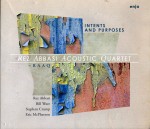 Moving south of the 49th parallel a different musical ethos takes hold. Alto saxophonist Rudresh Mahanthappa, whose parents are Indian, and guitarist Rez Abbasi, who was born in Pakistan and immigrated to the U.S. as a small child, have in the past recorded discs reflecting their South Asian roots. But both these New York-based players’ newest sessions are jazz, without ethnic subtitles. Mahanthappa’s Bird Calls (ACT 9581-2 actmusic.com) consists of 13 of the saxophonist’s compositions based on familiar Charlie “Bird” Parker lines; while Abbasi takes on eight jazz-rock classics of the 1970s on Intents and Purposes (Enja Records ENJ-952-2 enjarecords.com), and recasts them using only his acoustic guitars, Bill Ware’s vibes, Stephen Crump’s bass and the drums of Eric McPherson. Although hints of sarod-like shimmers from Abbasi’s fretless instrument peek through on Herbie Hancock’s Butterfly, the intent and purpose of this disc lies in post-modern interpretation. Decelerating and relaxing the themes, Abbasi and company transform them from arena jazz-rock showpieces to subtle improvisational vehicles. Instructively enough the tracks that work best are those such as Joe Zawinul’s Black Market, Chick Corea’s Medieval Overture and Tony Williams’ There Comes a Time written by composers who played other instruments than the rock-associated guitar and who had the strongest pre-fusion jazz bona fides. With McPherson’s percussion hovering in the background, these restrained interpretations usually take impetus from Crump’s bass line; while leaving room for his solo work as well. Medieval Overture for instance, features a sequence of time and tempo changes where the string build-up is divided between, and nearly identical from, bass and guitar interpretations. Ware’s buoyancy animates most of the sequences as well, showcasing resonating textures that are often voiced alongside Abbasi’s finger-style lead. Meanwhile There Comes a Time, the concluding – and climatic – track is painted in the most vibrant and captivating colours, with strong four-mallet vibraphone smacks blending with thick baritone guitar strums that almost resemble tenor saxophone licks. Keeping it and the other pieces in a proper groove, Intents and Purposesreclaims them all for the jazz canon.
Moving south of the 49th parallel a different musical ethos takes hold. Alto saxophonist Rudresh Mahanthappa, whose parents are Indian, and guitarist Rez Abbasi, who was born in Pakistan and immigrated to the U.S. as a small child, have in the past recorded discs reflecting their South Asian roots. But both these New York-based players’ newest sessions are jazz, without ethnic subtitles. Mahanthappa’s Bird Calls (ACT 9581-2 actmusic.com) consists of 13 of the saxophonist’s compositions based on familiar Charlie “Bird” Parker lines; while Abbasi takes on eight jazz-rock classics of the 1970s on Intents and Purposes (Enja Records ENJ-952-2 enjarecords.com), and recasts them using only his acoustic guitars, Bill Ware’s vibes, Stephen Crump’s bass and the drums of Eric McPherson. Although hints of sarod-like shimmers from Abbasi’s fretless instrument peek through on Herbie Hancock’s Butterfly, the intent and purpose of this disc lies in post-modern interpretation. Decelerating and relaxing the themes, Abbasi and company transform them from arena jazz-rock showpieces to subtle improvisational vehicles. Instructively enough the tracks that work best are those such as Joe Zawinul’s Black Market, Chick Corea’s Medieval Overture and Tony Williams’ There Comes a Time written by composers who played other instruments than the rock-associated guitar and who had the strongest pre-fusion jazz bona fides. With McPherson’s percussion hovering in the background, these restrained interpretations usually take impetus from Crump’s bass line; while leaving room for his solo work as well. Medieval Overture for instance, features a sequence of time and tempo changes where the string build-up is divided between, and nearly identical from, bass and guitar interpretations. Ware’s buoyancy animates most of the sequences as well, showcasing resonating textures that are often voiced alongside Abbasi’s finger-style lead. Meanwhile There Comes a Time, the concluding – and climatic – track is painted in the most vibrant and captivating colours, with strong four-mallet vibraphone smacks blending with thick baritone guitar strums that almost resemble tenor saxophone licks. Keeping it and the other pieces in a proper groove, Intents and Purposesreclaims them all for the jazz canon.
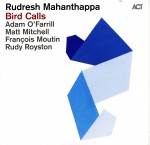 If transforming fusion into straight-ahead jazz is the attained challenge of Abbasi’s CD, then Bird Calls is an even more daunting task: finding a new way to interpret Parker’s legacy. Using a standard bop formation of saxophone, trumpet (Adam O’Farrill), piano (Matt Mitchell), bass (François Moutin) and drums (Rudy Royston), Mahanthappa’s contrafacts are up-to-the-minute statements which still intuit Parker’s essence. Putting a brake on bebop’s sometime frantic performance velocity, these interpretations are helped immeasurably by the saxophonist’s tone, which is wider and more rounded than Bird’s, often moving into the tenor range. In contrast, while O’Farrill frequently shows his age (20), by incessantly reaching for the most elevated capillary patterns, his excesses are reined in by the others. Oddly enough it’s the trumpeter’s Hispanic background which also comes into play giving a Latin feel to some of his work. As for Indian echoes, they’re practically non-existent, unless the obvious references to Hindu chanting on Gopuram can be counted. But even so this contrafact of Steeplechase gives more prominence to breakneck ripostes from piano, trumpet and saxophone. The remainder of the disc emphasizes a variant of mainstream jazz over all else. The rhythmic riffs that characterize Talin is Thinking (taken from Parker’s Mood) for example, go back as far as the Count Basie band’s elevation of the bluesy harmonies that came from Parker’s Kansas City hometown. Meanwhile Chillin’ (based on Relaxin’ at Canarillo), takes its shape from classic bop. The trumpeter and saxophonist face off with equivalent harsh lines while the bassist’s woody clunks and the drummer’s rolls and ruffs properly pace the galloping rhythms. Seconding both horns and carving space for himself throughout the tune, Mitchell demonstrates a command of the idiom as well as a casual, almost carefree pacing in his solos.
If transforming fusion into straight-ahead jazz is the attained challenge of Abbasi’s CD, then Bird Calls is an even more daunting task: finding a new way to interpret Parker’s legacy. Using a standard bop formation of saxophone, trumpet (Adam O’Farrill), piano (Matt Mitchell), bass (François Moutin) and drums (Rudy Royston), Mahanthappa’s contrafacts are up-to-the-minute statements which still intuit Parker’s essence. Putting a brake on bebop’s sometime frantic performance velocity, these interpretations are helped immeasurably by the saxophonist’s tone, which is wider and more rounded than Bird’s, often moving into the tenor range. In contrast, while O’Farrill frequently shows his age (20), by incessantly reaching for the most elevated capillary patterns, his excesses are reined in by the others. Oddly enough it’s the trumpeter’s Hispanic background which also comes into play giving a Latin feel to some of his work. As for Indian echoes, they’re practically non-existent, unless the obvious references to Hindu chanting on Gopuram can be counted. But even so this contrafact of Steeplechase gives more prominence to breakneck ripostes from piano, trumpet and saxophone. The remainder of the disc emphasizes a variant of mainstream jazz over all else. The rhythmic riffs that characterize Talin is Thinking (taken from Parker’s Mood) for example, go back as far as the Count Basie band’s elevation of the bluesy harmonies that came from Parker’s Kansas City hometown. Meanwhile Chillin’ (based on Relaxin’ at Canarillo), takes its shape from classic bop. The trumpeter and saxophonist face off with equivalent harsh lines while the bassist’s woody clunks and the drummer’s rolls and ruffs properly pace the galloping rhythms. Seconding both horns and carving space for himself throughout the tune, Mitchell demonstrates a command of the idiom as well as a casual, almost carefree pacing in his solos.
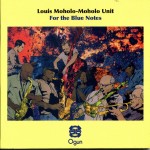 Yet another variation on this theme shows up on For The Blue Notes (Ogun Records OGCD 042 ogunrecords.com). Although the musicians featured have ancestral backgrounds from Martinique, Guyana and South Africa as well as parts of the United Kingdom, these ancestral memories are subsumed in this salute to the combo that left Apartheid-era South Africa to mingle high-life rhythms with British free jazz, creating an unmatched hybrid sound. Led by percussionist Louis Moholo-Moholo, the last surviving Blue Note, the octet’s repertory was mostly composed by original Blue Note members. What that means is that tracks such as Sonke and Zanele are fully in the South African style even though the associated vocals are by French-born (of Martinique background) Francine Luce. When she trades licks with the horns as well, the end product is high quality jazz that soars without labels or hyphens. Furthermore, listening to other creations like the title track, it’s bassist John Edwards’ solid timekeeping and pianist Alexander Hawkins’ kinetic chording that drive the undertaking as much as tie keening solos from saxophonist Jason Yarde and Ntshuks Bonga. Closer to the American rather than the Canadian concept here, the ancestral background of the players hardly influences the notable sounds issuing from their instruments.
Yet another variation on this theme shows up on For The Blue Notes (Ogun Records OGCD 042 ogunrecords.com). Although the musicians featured have ancestral backgrounds from Martinique, Guyana and South Africa as well as parts of the United Kingdom, these ancestral memories are subsumed in this salute to the combo that left Apartheid-era South Africa to mingle high-life rhythms with British free jazz, creating an unmatched hybrid sound. Led by percussionist Louis Moholo-Moholo, the last surviving Blue Note, the octet’s repertory was mostly composed by original Blue Note members. What that means is that tracks such as Sonke and Zanele are fully in the South African style even though the associated vocals are by French-born (of Martinique background) Francine Luce. When she trades licks with the horns as well, the end product is high quality jazz that soars without labels or hyphens. Furthermore, listening to other creations like the title track, it’s bassist John Edwards’ solid timekeeping and pianist Alexander Hawkins’ kinetic chording that drive the undertaking as much as tie keening solos from saxophonist Jason Yarde and Ntshuks Bonga. Closer to the American rather than the Canadian concept here, the ancestral background of the players hardly influences the notable sounds issuing from their instruments.
As more immigrants or children of immigrants begin to fill the ranks of Canadian improvisers it will be instructive in the future to observe whether an American-inflected national style takes hold, or if Canadian musical sensibilities will still include distinctive overseas links.
 Two Piano Concert at the Philadelphia Museum of Art
Two Piano Concert at the Philadelphia Museum of Art

